SSOK (2020)
SSOK is a quick, easy, and friendly solution for informational demarginalized people to help them search Public Health Fund Information.
Through this project, we experiment with the role and possibilities of new information delivery platforms.
The disabled, low-income class, the elderly, farmers, and fishermen are defined as the information-disadvantaged.
By designing a mobile application with a personalized designed UI according to the level of digital access and information capabilities,
we focus on helping the information-disadvantaged to access online information more conveniently.
Nominated as Korean Finalist in
Asia Open Data Challenge (conducted by Korea, Japan, Taiwan government) (2020)
Team SSOK: Yulri Kim, Jaeun Kim, Hojung Kim, Hyewon Kim, Donghyun Lee
(Leading professor: Jaehyuk Sung)
My Role: Directing, UX/UI design, Research
Supported by Kookmin University <UROP>(Summer Research Project)

Current Problem
As a result of social distancing, the face-to-face service, which was used as a traditional communication window, has been weakened, while online media consumption has been increased rapidly. Due to this, the information gap between the existing media-consuming groups and information marginalized groups is also becoming polarized.
Meanwhile, as the number of COVID19-related policies increases, public interest in other welfare information is also increasing. Current welfare policies have the complexity that the target and provider are different for each policy, and the method of application is different each time. In addition, as information is scattered over places, it is difficult to easily find a welfare policy that suits the user.

Information is scattered all over the internet, making it difficult to find practically.
Each support policy has various targets and subjects, and the application form is written with difficult terms, making it difficult for the target to understand accurately.
In particular, in the case of the information disadvantaged, it is often difficult to access the information even if the person is a target of the policy.
In addition, existing apps that provide welfare information do not use the elderly and the disabled-friendly interface.
As a result, the gap between the information disadvantaged and the general media consumers is deepening.


SSOK!
As the necessity of a platform that enables to smartly search and recommend welfare information arose,
this team is developing a mobile application, ‘SSOK’.
Through the development of ‘SSOK', we intend to smartly deliver welfare information to all citizens,
including the information disadvantaged such as the elderly, the disabled, and low-income groups.


Through the development of an app with good accessibility, we are suggesting a platform that can be used to search for information with a reduced labor force.
Also, it enables every smartphone user to conveniently receive and find personalized information with a user-friendly design.

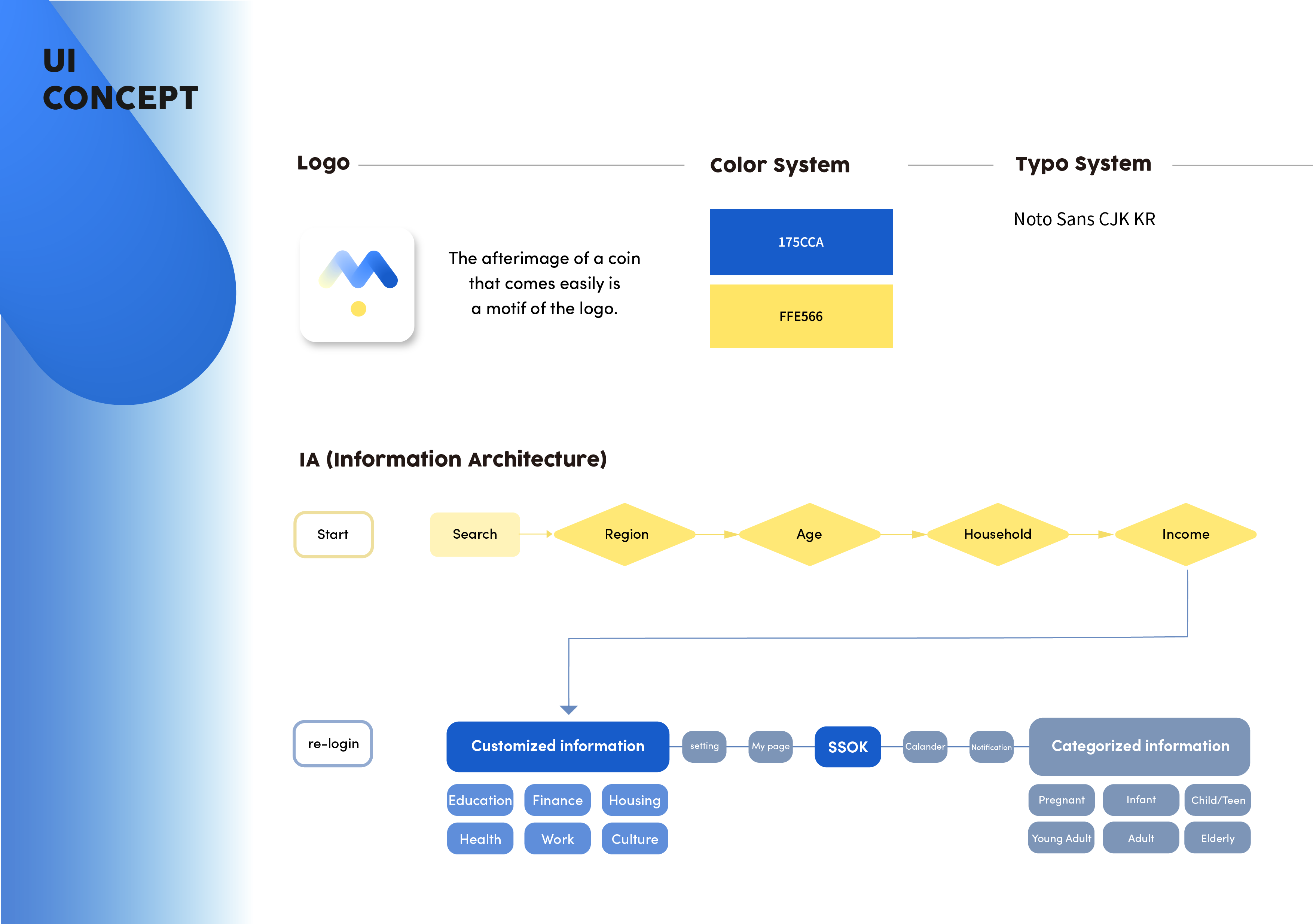
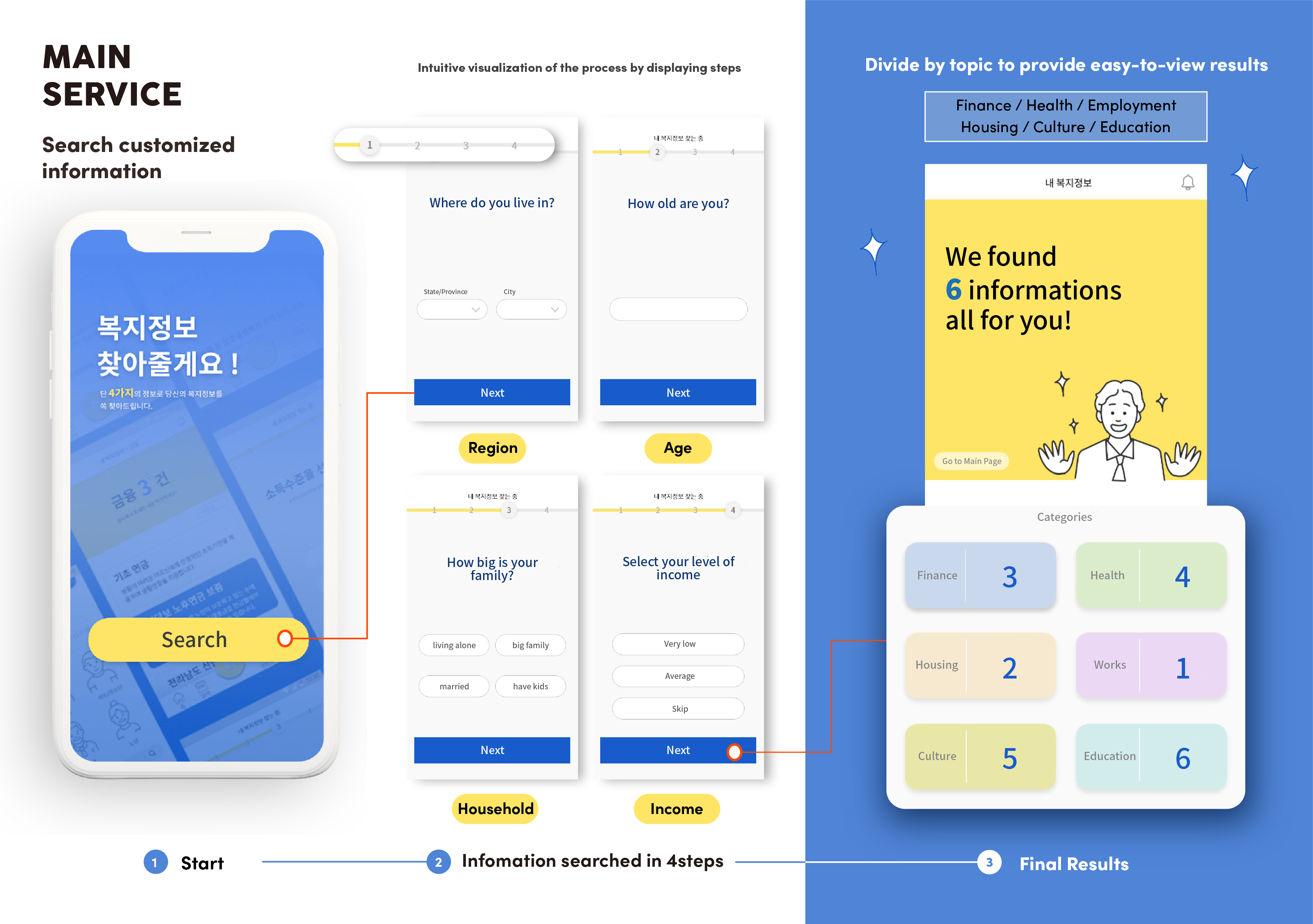
Anytime, anywhere, at a glance!
In just 4 steps, a user gets the welfare information that meets one’s conditions!
After receiving sorted information, the user can save interesting information in the ‘SSOK’ tab!
Store it in the calendar, and easily classify the entire welfare information according to the life cycle, household situation, and topics of interest.
'SSOK' is configured to be able to present personalized information in only 4 simple steps.
After connecting to the app, the user put personal information in four steps, such as region, age, household status, and income level.
Based on the entered information, “SSOK” provides personally sorted information that the user can apply to.
Welfare information is divided into six categories: education, employment, housing, health, finance, and culture, as of the government website.
The entered conditions are modified at any time, if desired by the user, so that the one can redo the searching process.

Easy for everyone! With a user-friendly interface.
“SSOK” presents an easy app interface that anyone can use, including information disadvantaged groups such as the elderly and the disabled.
The app interface is designed so that the 'SSOK' function can be easily understood and operated.
In addition, it allows the user to predict every function or the app without prior knowledge.
Create a consistent interface, such as setting the key color, unifying the moods of buttons and images, and using the Android system font.
In addition, it simplifies the operation by reducing users’ choices, therefore showing information easily and clearly.
In addition, the information is effectively transmitted through visuals so that it can be quickly understood at a glance by using an infographic icon
that summarizes several data into a single picture.
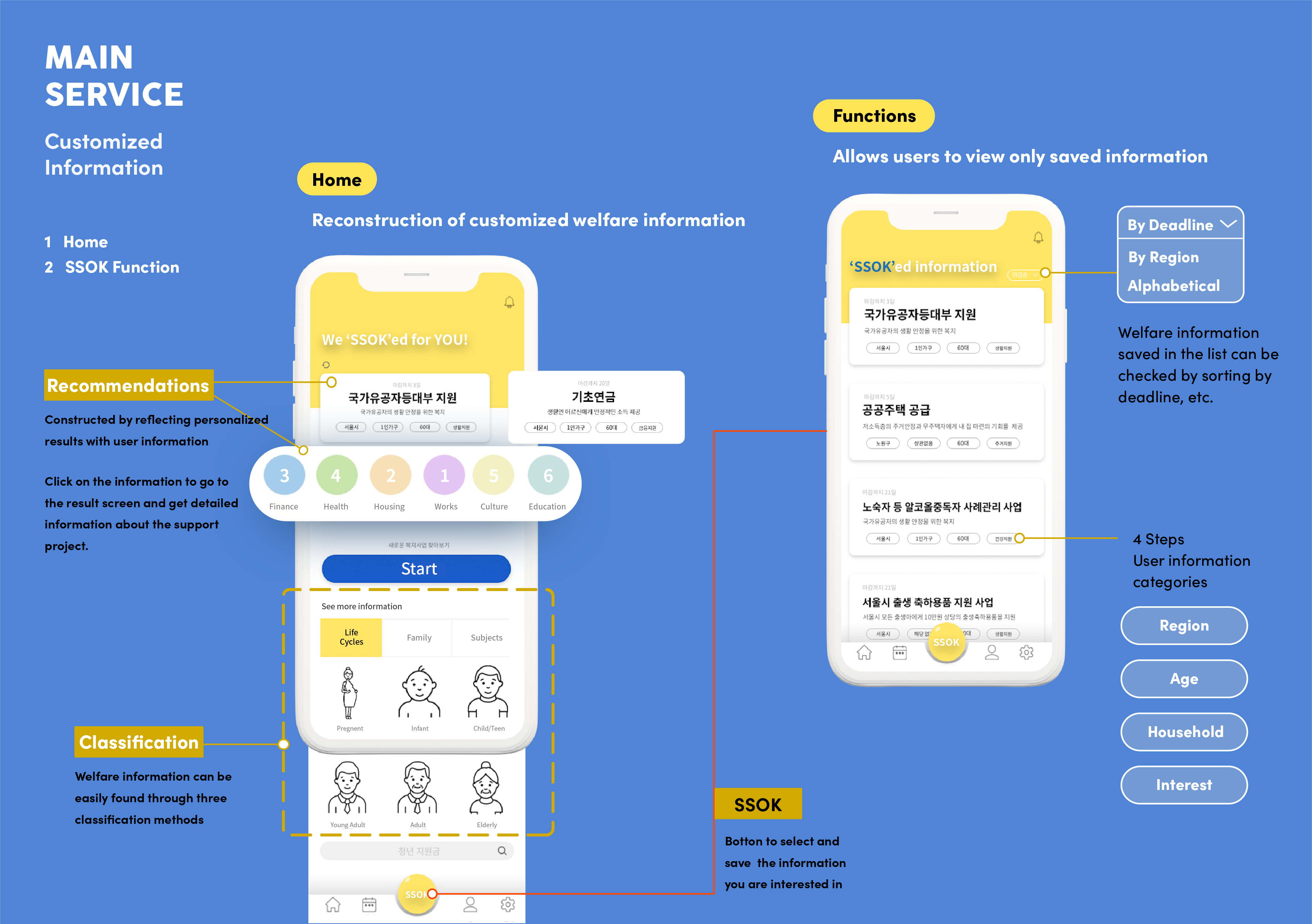
Instead of difficult words, it's easy to see at a glance!
When one of the six categories is selected, a summary of each welfare information is presented in one sentence.
Afterward, when the user selects the information that one wants to learn more about,
the qualification, application method, path, and restrictions for the policy are organized and displayed.
If difficult terms are used, a description of the word is provided to increase the user's understanding of the policy.
If the user has any questions or wants to get more detailed information, the user can simply click the button that directly connects the relevant inquiries. For users who want to make inquiries over the phone, a link that can be used to call the institution is placed in a well-visible place.
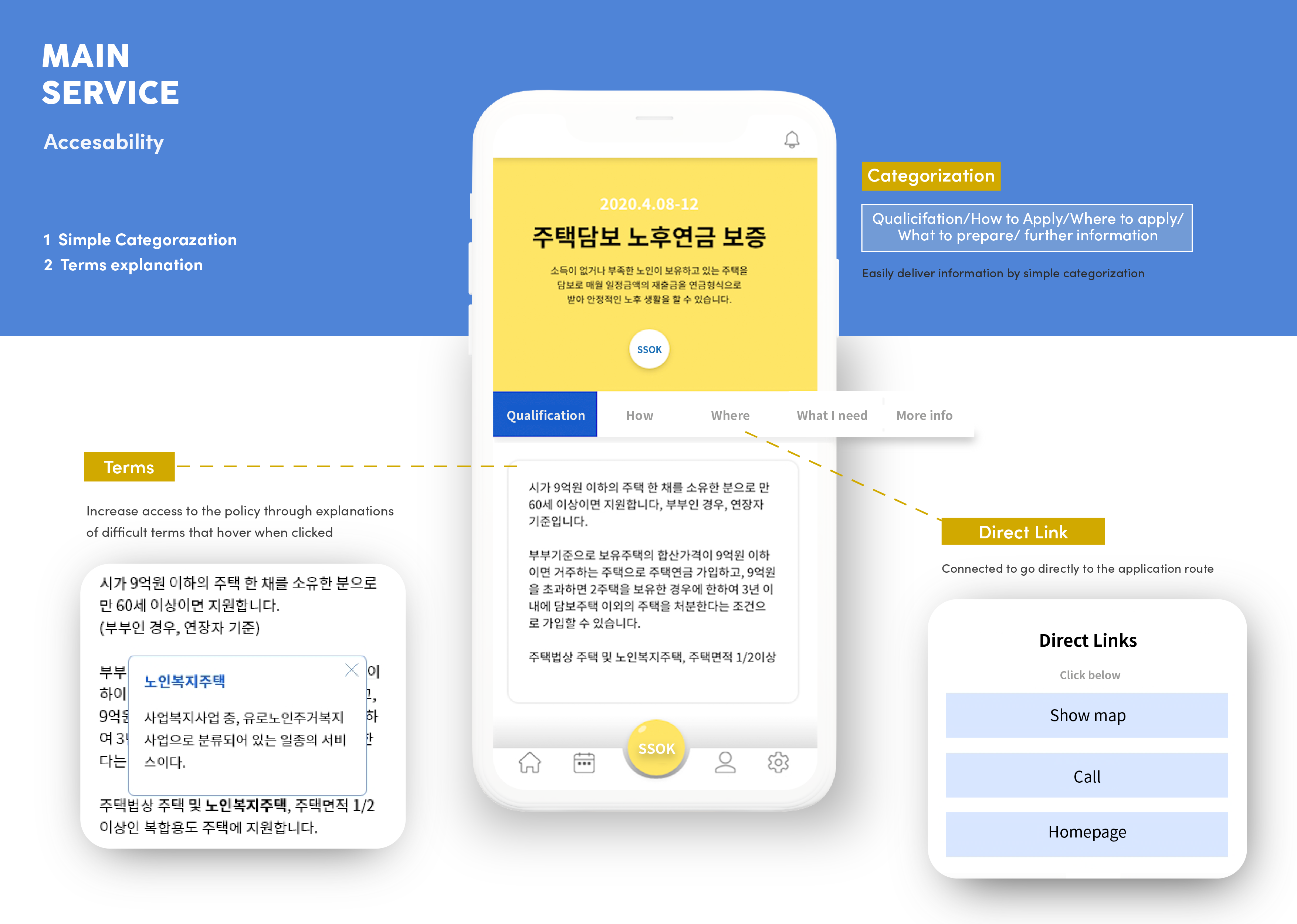
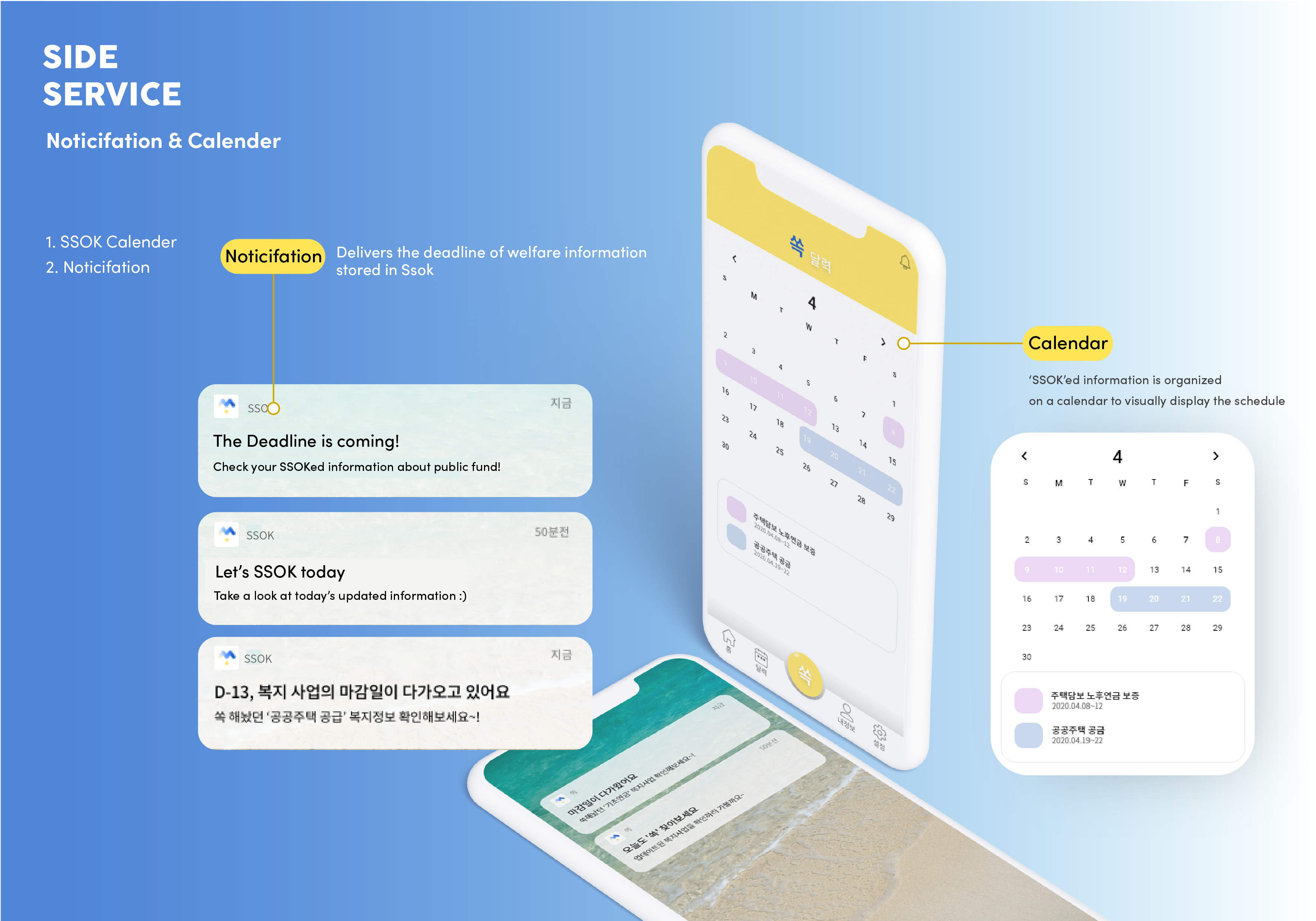
Interesting information is on the calendar!
After that, if the user wants to store specific information, one can save the information in the calendar by using the ’SSOK' function.
The welfare information that the user saved, can be viewed again at any time in the ‘SSOK’ tab at the tab bar.
The user can also receive an alarm for the deadline and amendments.
If the user becomes curious about other welfare information or wants to view the entire welfare information,
one can divide a vast amount of information through a classification system according to the life cycle, household situation, and subject of interest.

“SSOK” simplifies the process that the user must go through, and helps the user quickly and conveniently find the information they want.
It is intended to increase the effectiveness of the app by immediately reacting according to the user's selection and showing the situation to proceed to the next step more intuitively.
In addition, it is intended to provide a holistic experience that improves the quality of life of users, rather than just looking at the technology in terms of utility while using the app.
It is expected that the induction of a positive user experience through ‘SSOK’ will contribute to satisfying the needs of the user and improving the satisfaction of the national support project.

We expect SSOK to improve the effectiveness of public welfare policies by making it easier to transmit information between the provider and targets.
By developing “SSOK”, we hope that it will help improve the quality of life of the people
and help to reduce the information gap between the information disadvantaged class and the general media consumption group.
